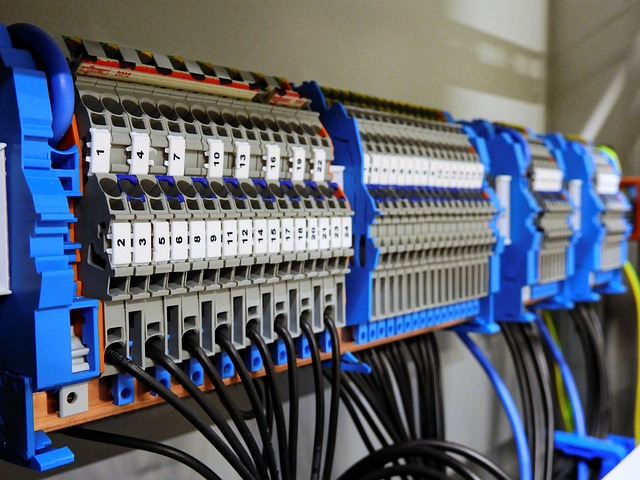An electrician is crucial for successful lighting design, assessing space factors like ceiling height, furniture placement, and natural light availability to recommend suitable fixtures (recessed lights, pendant lights). They tailor lighting solutions to specific tasks and aesthetics, integrating natural light through strategic window placements and skylights. Controlling artificial lighting with dimmers and carefully selected fixtures creates versatile ambient settings. Electricians are key in creating energy-efficient lighting schemes using LED technology and smart controls, optimizing illumination while minimizing energy consumption. They install, maintain, and optimize various lighting systems, collaborating with designers to create functional and aesthetically pleasing illuminated spaces.
“Illumination transforms spaces, setting the mood and enhancing functionality. Designing effective lighting plans is an art that combines aesthetics with practicality. This comprehensive guide navigates you through the process of optimizing home or business lighting. From understanding space-specific lighting needs to exploring energy-efficient solutions, we delve into essential factors and types of lighting applications. Additionally, learn about the crucial role of an electrician in bringing your ideal lighting design to life, ensuring both effectiveness and safety.”
- Understanding Lighting Needs for Different Spaces
- Essential Factors to Consider When Designing a Lighting Plan
- Types of Lighting and Their Applications
- Creating Energy-Efficient Lighting Schemes
- The Role of an Electrician in Implementing Effective Lighting Plans
Understanding Lighting Needs for Different Spaces

Understanding the lighting needs of different spaces is a crucial step in any lighting design plan, as it ensures optimal illumination and creates an inviting atmosphere. Whether designing for a home or a business, each space has unique requirements. For instance, living rooms and bedrooms often benefit from warm, ambient lighting to create a cozy ambiance, while kitchens and offices may require task lighting to enhance productivity and safety during food preparation or late-night work sessions.
A qualified electrician can play a vital role in assessing these needs by considering factors like ceiling height, space dimensions, furniture placement, and natural light availability. They can then recommend the most suitable fixtures, such as recessed lights for low-profile, uniform lighting or pendant lights for focal points. The goal is to create well-lit spaces that cater to the activities and moods of their occupants.
Essential Factors to Consider When Designing a Lighting Plan

When an electrician designs a lighting plan, several key factors come into play to ensure optimal illumination for both homes and businesses. Firstly, understanding the purpose and layout of the space is crucial. Different areas within a building serve diverse functions, from task-specific work zones to relaxed living spaces, each requiring tailored lighting solutions. The electrician must consider the type of tasks performed in each area and select lighting fixtures that enhance visibility and productivity while aligning with the aesthetic goals of the space.
Another critical aspect is the integration of natural light. Maximizing natural illumination through strategic window placements and skylights not only reduces reliance on artificial lighting but also contributes to energy efficiency and a more pleasant ambiance. An electrician should assess existing natural light availability and design plans that complement it, ensuring no shadows hinder activities or create unwelcoming conditions. Additionally, controlling the intensity and direction of artificial lighting through dimmers, switches, and carefully selected fixtures enables versatile ambient settings, catering to various moods and occasions.
Types of Lighting and Their Applications

In any lighting plan, understanding the various types of lighting and their unique applications is paramount. Electricians, as experts in this field, play a crucial role in designing effective systems that cater to both aesthetic and functional needs. General illumination, for instance, relies on ambient lighting fixtures like ceiling lights to fill spaces evenly, while task lighting, such as desk lamps or under-cabinet lights, enhance specific activities requiring focused attention.
Accent lighting, another essential category, is used to highlight architectural features or artistic pieces, creating depth and visual interest. In homes, this could involve directing spotlights towards a painting on the wall, while in commercial settings, it might include illuminating signages or exterior facades. Each type of lighting serves a distinct purpose, making a well-rounded plan that incorporates all of them essential for achieving optimal illumination in any environment.
Creating Energy-Efficient Lighting Schemes

Creating energy-efficient lighting schemes is a crucial aspect of modern home and business design, where an electrician plays a vital role in optimizing illumination while minimizing energy consumption. By employing LED technology and smart controls, electricians can craft lighting plans that significantly reduce power usage without compromising on quality or ambiance. This involves strategically placing fixtures to maximize natural light during the day and utilizing dimmers and timers at night, ensuring each space is illuminated effectively and efficiently.
An electrician can also integrate sensors and automated systems to manage lighting based on occupancy and time of day, further enhancing energy savings. Such schemes not only reduce utility bills but also contribute to a more sustainable environment, making them a popular choice for both residential and commercial projects.
The Role of an Electrician in Implementing Effective Lighting Plans

An electrician plays a pivotal role in bringing lighting plans to life, ensuring optimal illumination for both homes and businesses. They possess the technical expertise and practical knowledge to install and maintain various types of lighting systems, from traditional incandescent bulbs to modern LED technology. When designing an efficient lighting plan, an electrician considers factors like space configuration, task requirements, and energy efficiency goals.
Their skill lies in translating these considerations into practical wiring solutions and fixture placements. They ensure that the electrical system is capable of handling the desired lighting load while adhering to safety standards and local building codes. By collaborating closely with designers or architects, electricians can help create illuminated environments that are both aesthetically pleasing and functional, ultimately enhancing the overall user experience.
When designing lighting plans for homes or businesses, considering the unique needs of each space is paramount. From understanding task illumination requirements to selecting the right types of lighting, every element contributes to a well-functioning and aesthetically pleasing environment. Implementing energy-efficient schemes not only reduces costs but also benefits the planet. For optimal results, trust a qualified electrician to ensure safe and effective installation, enhancing both functionality and the overall ambiance of any space.
